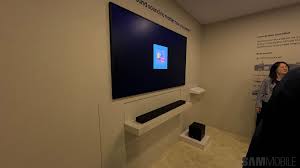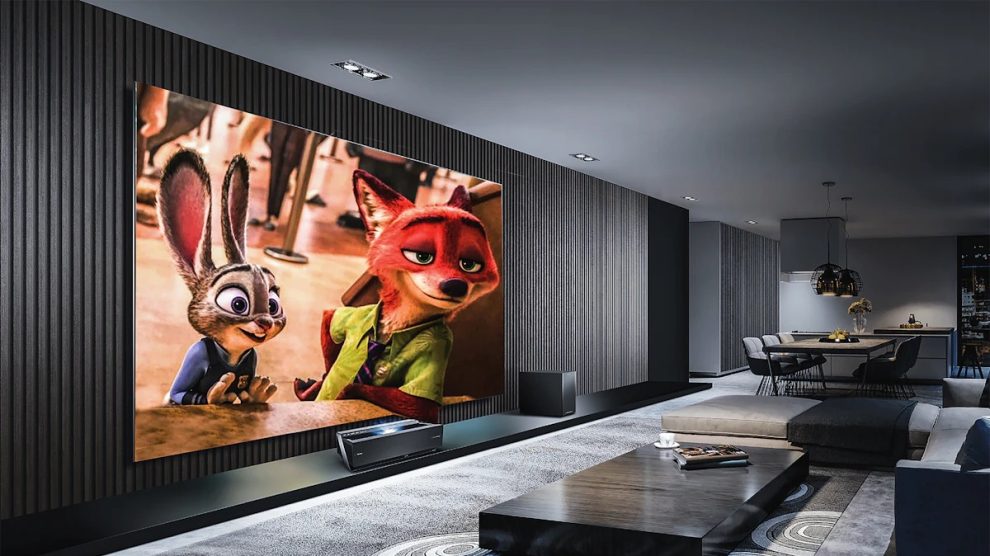Samsung has announced that its upcoming 2025 lineup of TVs and soundbars will not feature Dolby Atmos support, a decision that has sparked significant conversation among tech enthusiasts and audio-visual industry experts. The absence of this widely recognized audio format from one of the world’s leading electronics manufacturers has raised questions about the company’s strategy and its implications for consumers and the broader home entertainment market.

Dolby Atmos is widely celebrated for its ability to deliver an immersive audio experience, often described as three-dimensional sound. This technology enables audio to move around the listener in a space, creating a dynamic and engaging experience. For years, Dolby Atmos has been a preferred choice for home theater setups, and its integration into TVs and soundbars has become a standard expectation for many consumers. As a result, Samsung’s decision to exclude it from its upcoming products is seen as a significant departure from industry norms.
The company has opted to focus on its proprietary audio technology, which it claims delivers comparable or superior performance to Dolby Atmos. Samsung’s alternative audio solutions have been a cornerstone of its innovation strategy, emphasizing seamless integration with its other products, including smartphones and smart home devices. However, critics argue that this move could alienate a segment of its customer base that values compatibility with third-party devices and formats.
A key aspect of this decision involves licensing and compatibility concerns. Dolby Atmos requires manufacturers to pay licensing fees, which can be a considerable expense for companies producing millions of units annually. By avoiding these fees, Samsung can potentially reduce production costs, allowing it to invest in other areas or offer more competitive pricing. However, this cost-saving measure may come at the expense of consumer satisfaction and could influence purchasing decisions.
To understand the broader implications of Samsung’s strategy, it is important to examine how the market has responded to Dolby Atmos and similar technologies. Over the past decade, Dolby Atmos has gained significant traction, with support from major streaming platforms, movie studios, and hardware manufacturers. Consumers have increasingly come to associate the Dolby Atmos logo with premium audio quality, making it a key selling point for TVs, soundbars, and other audio equipment.
The exclusion of Dolby Atmos from Samsung’s 2025 lineup could also impact its position in the highly competitive home entertainment market. Brands like LG, Sony, and Vizio have embraced Dolby Atmos, promoting it as a must-have feature for high-end audio-visual products. By stepping away from this trend, Samsung risks losing ground to competitors that continue to prioritize Dolby Atmos compatibility.
Samsung’s decision may also affect partnerships with streaming platforms and content providers. Many streaming services, including Netflix, Disney+, and Amazon Prime Video, offer movies and shows in Dolby Atmos to enhance the viewing experience. Without support for this format, Samsung’s devices may not deliver the intended audio quality for such content, potentially putting them at a disadvantage compared to competing products.
For consumers, the absence of Dolby Atmos raises questions about future-proofing their home entertainment setups. As audio and video technologies evolve, compatibility with widely adopted formats becomes increasingly important. Samsung’s proprietary audio technology may deliver impressive performance, but its lack of cross-platform compatibility could limit its appeal to users who value flexibility and interoperability.
The move also underscores a broader trend in the electronics industry, where manufacturers are increasingly developing proprietary technologies to differentiate their products. While this approach allows companies to create unique features and ecosystems, it can also lead to fragmentation and reduced compatibility across devices and platforms. For consumers, this often means having to choose between sticking with a single brand’s ecosystem or sacrificing certain features when mixing and matching products from different manufacturers.
A closer look at Samsung’s 2025 lineup reveals an emphasis on other innovations aimed at enhancing the overall viewing and listening experience. The company has introduced advanced picture quality technologies, including next-generation QLED panels and improved HDR capabilities. These features are designed to deliver exceptional visual performance, reinforcing Samsung’s reputation as a leader in display technology. However, critics argue that these advancements may not fully compensate for the absence of Dolby Atmos, especially for consumers who prioritize audio quality.
The decision to exclude Dolby Atmos also reflects broader challenges facing the audio-visual industry. As technology continues to advance, manufacturers must navigate a complex landscape of licensing agreements, consumer expectations, and competitive pressures. Balancing these factors requires careful consideration of both short-term costs and long-term strategic goals.
A comparative analysis of Samsung’s 2025 lineup with offerings from its competitors highlights the potential impact of this decision. The table below provides an overview of key features and specifications for high-end TVs and soundbars from leading brands:
| Brand | Dolby Atmos Support | Display Technology | Audio Enhancements | Market Position |
|---|---|---|---|---|
| Samsung | No | QLED, HDR improvements | Proprietary audio technology | Market leader, innovative features |
| LG | Yes | OLED, advanced HDR | Dolby Atmos, AI Sound Pro | Strong focus on audio-visual quality |
| Sony | Yes | OLED, XR technology | Dolby Atmos, Acoustic Surface Audio | Premium segment focus |
| Vizio | Yes | QLED, Dolby Vision | Dolby Atmos, DTS:X | Budget-friendly, feature-rich |
This comparison underscores the competitive challenges Samsung may face in the absence of Dolby Atmos support. While the company remains a leader in display technology, its competitors continue to emphasize audio performance as a key differentiator.
Ultimately, the success of Samsung’s 2025 lineup will depend on how well its proprietary audio technology is received by consumers and whether it can effectively address the needs and expectations of the market. For those considering a purchase, it is essential to weigh the benefits of Samsung’s innovations against the potential limitations posed by the lack of Dolby Atmos support.
Samsung’s decision to exclude Dolby Atmos from its 2025 TVs and soundbars represents a bold shift in its approach to home entertainment. While the company’s proprietary technologies promise impressive performance, the absence of this widely recognized audio format could influence consumer perceptions and market dynamics. As the industry evolves, it remains to be seen how this decision will shape Samsung’s position in the competitive world of audio-visual technology. For now, it is clear that the debate over Dolby Atmos and its role in home entertainment is far from over.










Add Comment